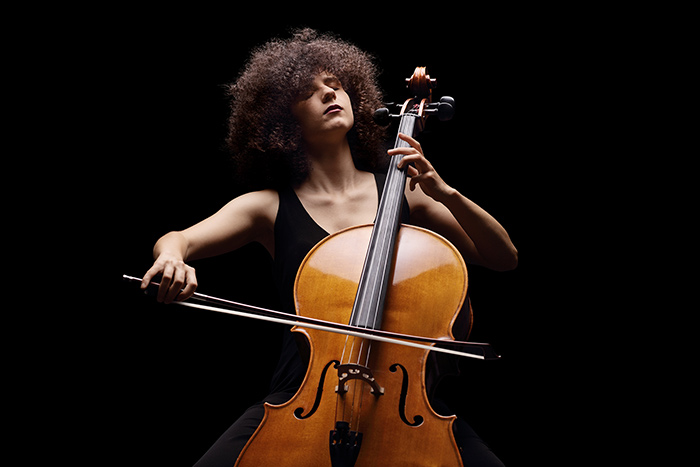Johann Sebastian Bach‘s six cello suites stand as a pinnacle of musical achievement, both in the work of the great composer, and the Baroque period as a whole.
Composed around 1720, these suites represent a culmination of Bach’s mastery of melody, harmony, form and expression. Each suite consists of a series of dances, showcasing Bach’s ability to infuse profound musical ideas within the framework of traditional dance forms.
From the intricate harmonic journeys of the Preludes to the spirited rhythms of the Gigues, the Bach cello suites captivate listeners with their timeless appeal, and will forever stand as a fixture in every accomplished cellist’s repertoire.
An Overview of the Suites
One of the remarkable aspects of the Bach cello suites is their versatility. Written for solo cello, these suites demonstrate Bach’s ability to create music that is both technically varied and artistically profound. The suites offer a wide range of challenges for the cellist, including intricate fingerings, rapid passages, and complex bowing techniques.
Yet, beneath the surface, complexity lies a profound simplicity, as Bach’s melodies and harmonies resonate with clarity and grace. The first suite, in G Major, is the most widely known of the six. The gracefully oscillating Prelude sets the tone with a gradually developing series of broken chords. Bach couldn’t have written a more comfortable and in-character opening to his greatest work, mimicking the equally iconic C Major Prelude from the Well-Tempered Clavier.
The harmonically-descriptive melodies, constructed with near perfect phrasing, have had lasting effects in the music world all the way up to the present day. Many jazz musicians consider Bach the originator of Bebop, and the cello suites certainly help to make their case watertight. The suite one Allemande is the first movement in which you can witness in full the similarities between Bach and Charlie Parker.
Descriptive melodies aren’t just about running up and down whatever scale suits you; nuanced shape-work and careful phrasing are essential to the Bebop sound. In the case of Bach, and particularly pieces like the suite one Allemande, the use of mordents, turns, and enclosures in opportune places allows the music to smoothly wind around a beautiful series of target notes.
The first suite being in G major makes it overall a joyful piece of music, but it still gives the player the opportunity for reflective playing in the graceful Sarabande, as well as a darker tone in the 2nd Minuet to contrast its bouncing upbeat counterpart. The remaining suites continue this pattern of alternating fast and slow movements, creating a sense of balance and symmetry throughout the collection.
Why the Suites are a Cellist’s best friend
One of the most remarkable aspects of the Bach cello suites is their emotional depth. Despite being written for a solo instrument, Bach’s music is rich in expression, conveying a wide range of emotions from joy and exuberance to sorrow and introspection.
In the slower movements, such as the Sarabandes, Bach’s melodies unfold with a sense of profound melancholy, while the faster movements, such as the Courantes and Gigues, brim with energy and vitality. The Bach cello suites have also inspired countless musicians and composers across the centuries. From Pablo Casals to Yo-Yo Ma, cellists have sought to interpret and reinterpret Bach’s music, each bringing their own unique perspective to these timeless works.
In addition, composers such as Benjamin Britten and György Ligeti have drawn inspiration from Bach’s suites, incorporating elements of his style into their own compositions.
What draws many cellists to the suites is this almost limitless scope for interpretation. A good edition of the suites (I recommend Barenreiter) arrives in the mailbox pristine, with only limited suggestions of bowing and fingering patterns.
Once a cellist has worked their way through the entire collection, this book will be littered in edits. Changes of heart when selecting bowing are very common, and cellists will often be influenced by watching someone else perform a movement in a different way to them.
Articulation, dynamics, techniques all eventually get scribbled on the page. An old copy of the suites often becomes quite a work of art.
Why every Cellist should play the Suites!
I cannot express enough how important the Bach cello suites are to cellists, and to classical music as a whole. I have often had students say to me that the pieces they play do not sound like music. The cello is nearly always paired up with other instruments to accompany it, for example, the piano. This can be a hinderance when practising alone, as the full substance of the music isn’t there and the student can feel lost.
The Bach cello suites do not suffer from this problem, and they highlight the cello’s versatility in being able to stand alone and perform complete musical works. This makes the suites very satisfying to practise and is very helpful to those who run low on motivation.
Because the suites present a blank canvas when it comes to performance style, it also allows a cellist to put their own emotional stamp on each movement. This requires maturity and openness from the cellist, and so the suites become a strong catalyst for the stylistic and emotional development of each player.
Because of this, I recommend all of my students start playing the suites as soon as they are technically able. I always suggest starting with the suite one Minuets, which give you a little bit of all the technical requirements of the suites without being too taxing.
Through their intricate counterpoint, expressive melodies, and emotional depth, these suites continue to captivate audiences and inspire musicians to this day. As a masterpiece of musical ingenuity, the Bach cello suites remain an enduring symbol of Bach’s legacy and a treasure of the classical repertoire. Order your copy, and let the journey begin!








